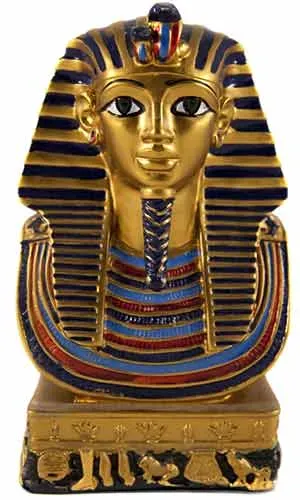 From the beginning of human history, people have desired precious gemstones. Various precious stones have been found in ruins, monuments, and caskets of prehistoric people, the Pharaohs, the Incas, and the Montezumas. The Magi and astrologers of ancient times found meaning in gemstones, meanings that have been forgotten even now. Astrologers saw various meanings for each stone ï¾– matching each gem to certain virtues and abilities, as well as correspondences with the four seasons of the year. These people firmly believed in the influence a gem could have on a child's birth. They thought that evil could be held back from affecting a child by wearing talismanic and zodiacal gems. Folklorists, in fact, wonder whether wearing precious gemstones in jewelry came more from the idea of protection, than beautiful adornment.
From the beginning of human history, people have desired precious gemstones. Various precious stones have been found in ruins, monuments, and caskets of prehistoric people, the Pharaohs, the Incas, and the Montezumas. The Magi and astrologers of ancient times found meaning in gemstones, meanings that have been forgotten even now. Astrologers saw various meanings for each stone ï¾– matching each gem to certain virtues and abilities, as well as correspondences with the four seasons of the year. These people firmly believed in the influence a gem could have on a child's birth. They thought that evil could be held back from affecting a child by wearing talismanic and zodiacal gems. Folklorists, in fact, wonder whether wearing precious gemstones in jewelry came more from the idea of protection, than beautiful adornment.
 In medieval times, people firmly believed in the protective influence of precious stones, but during the Renaissance period, these ideas were questioned. Investigations began, and people tried to find solid reasoning for these traditional beliefs. At that time, they still firmly believed in the power of these precious gemstones, but an explanation was needed and sought after. Precious stones were still thought to have actual supernatural virtues, but they wanted to know why they had the power to change one's character, fortune, and health.
In medieval times, people firmly believed in the protective influence of precious stones, but during the Renaissance period, these ideas were questioned. Investigations began, and people tried to find solid reasoning for these traditional beliefs. At that time, they still firmly believed in the power of these precious gemstones, but an explanation was needed and sought after. Precious stones were still thought to have actual supernatural virtues, but they wanted to know why they had the power to change one's character, fortune, and health.
 No substantial, scientific explanations have been found for the various virtues of gemstones. However, their alluring beauty tempts us into wanting to believe what the ancient people believed. One theory, is that the power of suggestion may explain the mysterious powers of gemstones. If the wearer feels a gem produces certain results, these thoughts will become a part of him or her, and therefore perhaps on the physical self as well. This thought process can have just as much power to the self as the powers that the stones supposedly have.
No substantial, scientific explanations have been found for the various virtues of gemstones. However, their alluring beauty tempts us into wanting to believe what the ancient people believed. One theory, is that the power of suggestion may explain the mysterious powers of gemstones. If the wearer feels a gem produces certain results, these thoughts will become a part of him or her, and therefore perhaps on the physical self as well. This thought process can have just as much power to the self as the powers that the stones supposedly have.
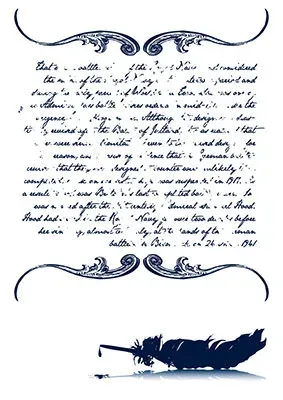 Gemstones have carried many superstitions throughout time. In an old poem addressed to Marguerite de Valois, the Queen of France in the 16th century, poet Jean de la Taille wrote that diamonds came from gold, and gold came from the sun. La Taille went on to say that while precious stones are full of life, they are also prone to disease, old age, and death. Just like humans, "They even take offence if an injury be done to them, and become rough and pale."""
Gemstones have carried many superstitions throughout time. In an old poem addressed to Marguerite de Valois, the Queen of France in the 16th century, poet Jean de la Taille wrote that diamonds came from gold, and gold came from the sun. La Taille went on to say that while precious stones are full of life, they are also prone to disease, old age, and death. Just like humans, "They even take offence if an injury be done to them, and become rough and pale."""
 Anselmus De Boot, a physician to the Emperor Rudolph II of Germany in the 17th Century, wrote a book on gemstones and their powers and discussed the facts and fictions of many of the superstitions. He writes, "That gems or stones while applied to the body, exert an action upon it, is so well proven by the experience of many persons, that anyone who doubts this must be called over-bold. We have proof of this power in the carnelian, the hematite, and the Jasper, all of which when applied, check hemorrhageï¾… However, it is very necessary to observe that many virtues not possessed by gems are falsely ascribed to them."""
Anselmus De Boot, a physician to the Emperor Rudolph II of Germany in the 17th Century, wrote a book on gemstones and their powers and discussed the facts and fictions of many of the superstitions. He writes, "That gems or stones while applied to the body, exert an action upon it, is so well proven by the experience of many persons, that anyone who doubts this must be called over-bold. We have proof of this power in the carnelian, the hematite, and the Jasper, all of which when applied, check hemorrhageï¾… However, it is very necessary to observe that many virtues not possessed by gems are falsely ascribed to them."""
 Staring at an specific object for a long time can have a hypnotic effect on our minds. This effect can be compared to a situation in nature, for example, when a bird becomes helpless if he fixes his gaze on the glistening eyes of a serpent. Similarly, humans who stare for a long time at a crystal, or precious stone, may become partially hypnotized - or ムspaced out'. A single point of light in the stone can cause this hypnotic effect. The moonstone, star
Staring at an specific object for a long time can have a hypnotic effect on our minds. This effect can be compared to a situation in nature, for example, when a bird becomes helpless if he fixes his gaze on the glistening eyes of a serpent. Similarly, humans who stare for a long time at a crystal, or precious stone, may become partially hypnotized - or ムspaced out'. A single point of light in the stone can cause this hypnotic effect. The moonstone, star ![]() sapphire, and the cat's eye, are all gems which possess a moving light or moving lines and are believed by some Asian cultures to be good luck. Some people think that a spirit of goodness actually lives inside of these stones.
sapphire, and the cat's eye, are all gems which possess a moving light or moving lines and are believed by some Asian cultures to be good luck. Some people think that a spirit of goodness actually lives inside of these stones.
 Superstitions are to the truth as a shadow to the object that is casting it. A shadow has no real existence, but we know that it is created by something real. In the same way, superstitions may seem foolish, but they all relate to a solid foundation. Superstition has to do with the highest attribute of the human mind - the imagination. All of the great works of art and literature have came from the human imagination, and so have superstitions.
Superstitions are to the truth as a shadow to the object that is casting it. A shadow has no real existence, but we know that it is created by something real. In the same way, superstitions may seem foolish, but they all relate to a solid foundation. Superstition has to do with the highest attribute of the human mind - the imagination. All of the great works of art and literature have came from the human imagination, and so have superstitions.
 Emotion may be expressed best as the feeling of one who is rowing along in a boat on a summer day with nothing to interfere with his calm state of mind, so he is left with only suggestions of hope and indulges in "rosy views of life."" Conversely, reality may be expressed by a crisp winter morning, where one is full of exhilaration, aware of the harsh cold, yet comfortable with the knowledge that they have the protection of warm clothing to fight against this disturbing feeling. Superstition however, can resemble a dark, cold and misty night, when the moon is throwing strange, disturbing shadows. The weather seems to seize one by the throat and arouses a desire to free one's self from its grip and change a horrible nightmare into a beautiful dream."
Emotion may be expressed best as the feeling of one who is rowing along in a boat on a summer day with nothing to interfere with his calm state of mind, so he is left with only suggestions of hope and indulges in "rosy views of life."" Conversely, reality may be expressed by a crisp winter morning, where one is full of exhilaration, aware of the harsh cold, yet comfortable with the knowledge that they have the protection of warm clothing to fight against this disturbing feeling. Superstition however, can resemble a dark, cold and misty night, when the moon is throwing strange, disturbing shadows. The weather seems to seize one by the throat and arouses a desire to free one's self from its grip and change a horrible nightmare into a beautiful dream."
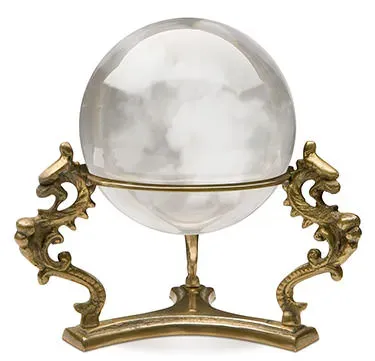 In the early part of the 1800's, a series of experiments were conducted with the cooperation of a woman who was believed to be a clairvoyant. The experiments were designed to show the effects of a gemstone's touch upon a person. Pieces of granite, flint, or porphyry were placed in the woman's hands to see if any changes would occur; but she was not affected by these stones. However, when a piece of fluorspar was placed in her hands, she immediately became sick to her stomach, had a bad taste in her mouth, and even began to sleep walk. Barium, on the other hand, produced a pleasurable warmth in her body and made her feel powerful. If she kept the barium in her hands for a while, this pleasurable feeling resulted in laughter. Witherite, a type of barium, produced this same pleasurable feeling to a much higher degree, causing enormous spurts of laughter.
In the early part of the 1800's, a series of experiments were conducted with the cooperation of a woman who was believed to be a clairvoyant. The experiments were designed to show the effects of a gemstone's touch upon a person. Pieces of granite, flint, or porphyry were placed in the woman's hands to see if any changes would occur; but she was not affected by these stones. However, when a piece of fluorspar was placed in her hands, she immediately became sick to her stomach, had a bad taste in her mouth, and even began to sleep walk. Barium, on the other hand, produced a pleasurable warmth in her body and made her feel powerful. If she kept the barium in her hands for a while, this pleasurable feeling resulted in laughter. Witherite, a type of barium, produced this same pleasurable feeling to a much higher degree, causing enormous spurts of laughter.
 Rock crystal was also found to have a strong influence on the woman when placed in her hands - it would begin to wake her up from a half-sleeping state. When placed on her stomach, the crystal had the power to wake her up from her sleepwalking state, and at the same time, produce a pleasant, distinctive smell all around her. When the crystal was placed in her hands for a long time, the woman's muscles became stiff, until she reached an epileptic state. Her limbs then became so rigid; they were impossible to bend. Glass ï¾– even merely looking at it, also produced this effect, but to a much lesser degree. In fact, all colorless silicates, like gypsum, heliotrope, basalt, and even
Rock crystal was also found to have a strong influence on the woman when placed in her hands - it would begin to wake her up from a half-sleeping state. When placed on her stomach, the crystal had the power to wake her up from her sleepwalking state, and at the same time, produce a pleasant, distinctive smell all around her. When the crystal was placed in her hands for a long time, the woman's muscles became stiff, until she reached an epileptic state. Her limbs then became so rigid; they were impossible to bend. Glass ï¾– even merely looking at it, also produced this effect, but to a much lesser degree. In fact, all colorless silicates, like gypsum, heliotrope, basalt, and even ![]() diamond, had a similar effect.
diamond, had a similar effect.
 During these experiments with various crystals, hematite was found to have the strongest effect on the clairvoyant woman. Hematite would induce a paralysis in the woman, an inner chill, which could only be alleviated if the woman held a piece of witherite. Magnetite caused her to experience a sensation of heaviness and convulsive movement in her limbs, even if the stone was wrapped up in something and brought near her. Contact with the magnetite was not even necessary to produce these effects. When the woman held a
During these experiments with various crystals, hematite was found to have the strongest effect on the clairvoyant woman. Hematite would induce a paralysis in the woman, an inner chill, which could only be alleviated if the woman held a piece of witherite. Magnetite caused her to experience a sensation of heaviness and convulsive movement in her limbs, even if the stone was wrapped up in something and brought near her. Contact with the magnetite was not even necessary to produce these effects. When the woman held a ![]() ruby, her tongue became cold and heavy, to the point where she could no longer speak, and could only make sounds. Ruby caused her fingers and toes to be cold to the point where her entire body began violently shivering. After these strange, disturbing symptoms, however, came a sense of well-being, accompanied by a slight fear that the physical effects may return. Holding chrysoprase brought on chills and shivers as well.
ruby, her tongue became cold and heavy, to the point where she could no longer speak, and could only make sounds. Ruby caused her fingers and toes to be cold to the point where her entire body began violently shivering. After these strange, disturbing symptoms, however, came a sense of well-being, accompanied by a slight fear that the physical effects may return. Holding chrysoprase brought on chills and shivers as well.
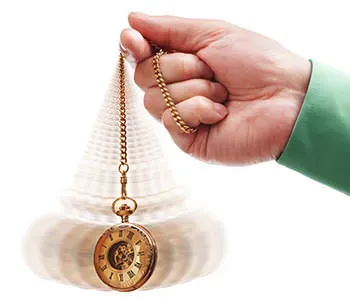 We have mentioned the hypnotic effects gemstones can have on a person, but we have not taken into consideration the mental and physical state of the person that is affected by gemstones. The capacity for a gemstone to affect a person is highly dependant on the mental impression the person has, and the level of belief and fear within that person.
We have mentioned the hypnotic effects gemstones can have on a person, but we have not taken into consideration the mental and physical state of the person that is affected by gemstones. The capacity for a gemstone to affect a person is highly dependant on the mental impression the person has, and the level of belief and fear within that person.
 The names of precious and semi-precious gemstones are frequently used as adjectives. For example, we may say the "
The names of precious and semi-precious gemstones are frequently used as adjectives. For example, we may say the "![]() emerald isle,"" ""emerald meadows,"" ""
emerald isle,"" ""emerald meadows,"" ""![]() sapphire seas,"" ""sapphire eyes,"" ""
sapphire seas,"" ""sapphire eyes,"" ""![]() ruby wine"" and ""ruby lips."" Shakespeare used the terms, ""the natural ruby of your cheeks,"" ""coral lips,"" ""coral ears,"" ""pearly teeth,"" ""pearly skin,"" and ""
ruby wine"" and ""ruby lips."" Shakespeare used the terms, ""the natural ruby of your cheeks,"" ""coral lips,"" ""coral ears,"" ""pearly teeth,"" ""pearly skin,"" and ""![]() turquoise skies."" In all of these cases, the name of the mineral is used as an extreme version of the adjective, suggesting the finest variety of that particular color. The phrase ""clear as crystal"" shows a similar use of the name of a precious or ornamental stone to express the highest degree of quality."
turquoise skies."" In all of these cases, the name of the mineral is used as an extreme version of the adjective, suggesting the finest variety of that particular color. The phrase ""clear as crystal"" shows a similar use of the name of a precious or ornamental stone to express the highest degree of quality."
 A fairy tale written long ago, tells the story of the real-life problems that would result should such expressions become reality. In the story, at a party for the birth of a princess, one of the fairies was not invited. Nevertheless, she showed up. After another one of the fairies had blessed the newborn child with many good qualities, the uninvited fairy said, "I will give her vanity, and her vanity shall change her beauty to the things it is said to resemble."" However a friendly fairy then came to the newborn's rescue and said, ""I will give her unselfishness, and by it she shall turn her beauty back to what she wishes it to be."""
A fairy tale written long ago, tells the story of the real-life problems that would result should such expressions become reality. In the story, at a party for the birth of a princess, one of the fairies was not invited. Nevertheless, she showed up. After another one of the fairies had blessed the newborn child with many good qualities, the uninvited fairy said, "I will give her vanity, and her vanity shall change her beauty to the things it is said to resemble."" However a friendly fairy then came to the newborn's rescue and said, ""I will give her unselfishness, and by it she shall turn her beauty back to what she wishes it to be."""
 As this newborn princess grew up, people who wanted to flatter her spoke to her about her "teeth of pearl,"" her ""golden hair,"" ""coral lips,"" and ""
As this newborn princess grew up, people who wanted to flatter her spoke to her about her "teeth of pearl,"" her ""golden hair,"" ""coral lips,"" and ""![]() sapphire eyes."" Once these words were said out loud, the princess' teeth changed to pearls, her hair turned to gold, her lips to changed to coral, and her eyes became two beautiful, sparkling sapphires. As beautiful as her eyes were, they did not give her the power to see, so the princess became blind. Shortly after this, a revolution caused the king and queen to lose their throne, and they became quite poor. During this time, their daughter sacrificed her ""gold hair"" and sold it to help their financial troubles. Immediately, this horrible spell broke, and she regained all of her natural beauty, as well as the ability to see."
sapphire eyes."" Once these words were said out loud, the princess' teeth changed to pearls, her hair turned to gold, her lips to changed to coral, and her eyes became two beautiful, sparkling sapphires. As beautiful as her eyes were, they did not give her the power to see, so the princess became blind. Shortly after this, a revolution caused the king and queen to lose their throne, and they became quite poor. During this time, their daughter sacrificed her ""gold hair"" and sold it to help their financial troubles. Immediately, this horrible spell broke, and she regained all of her natural beauty, as well as the ability to see."
 In the poetry of Percy Bysshe Shelley, he writes of "
In the poetry of Percy Bysshe Shelley, he writes of "![]() diamond eyes,"" ""an
diamond eyes,"" ""an ![]() emerald sky,"" ""the emerald heaven of trees,"" ""the
emerald sky,"" ""the emerald heaven of trees,"" ""the ![]() sapphire floods of interstellar air,"" and ""the chrysolite of sunrise."" For some reason, he never mentions the
sapphire floods of interstellar air,"" and ""the chrysolite of sunrise."" For some reason, he never mentions the ![]() ruby, a stone which poets seem to prefer. Psychologists find this to be proof that idealists like the color red, less than others do."
ruby, a stone which poets seem to prefer. Psychologists find this to be proof that idealists like the color red, less than others do."
 The main literary sources for the talismanic and therapeutic virtues of gemstones can be divided into a few groups. The Roman author Pliny the Elder writes about some superstitions, but the Alexandrian writings from the second, third and fourth Christian centuries give us much more information. In the seventh, eighth and ninth centuries, new literature on this subject appeared in Asia Minor. At the end of the 11th Century, Marbodus, the Bishop of Rennes, wrote a poetical treatise on the virtues of precious stones. In his writings, however, Marbodus drew a lot from Pliny. In the Middle Ages, Marbodus' poem, "Lapidaro,"" was translated into Old French and cites a large part of his writings to medieval authors. Soon, excerpts from Arabic sources who wrote about gemstones became available, and the whole mass of different material was reworked and recombined in different ways."
The main literary sources for the talismanic and therapeutic virtues of gemstones can be divided into a few groups. The Roman author Pliny the Elder writes about some superstitions, but the Alexandrian writings from the second, third and fourth Christian centuries give us much more information. In the seventh, eighth and ninth centuries, new literature on this subject appeared in Asia Minor. At the end of the 11th Century, Marbodus, the Bishop of Rennes, wrote a poetical treatise on the virtues of precious stones. In his writings, however, Marbodus drew a lot from Pliny. In the Middle Ages, Marbodus' poem, "Lapidaro,"" was translated into Old French and cites a large part of his writings to medieval authors. Soon, excerpts from Arabic sources who wrote about gemstones became available, and the whole mass of different material was reworked and recombined in different ways."
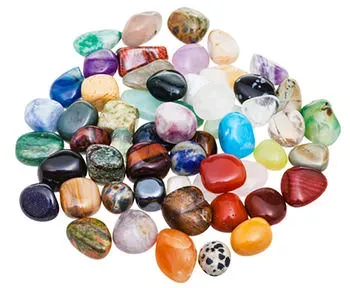 The complex origins of gemstone information explains the contradictions regarding the virtues of each stone. The fact that the qualities of one stone are frequently attributed to other stones, makes it impossible to present a clear explanation of the distinguishing properties of each stone. The habit of copying information that was already discovered, without discrimination or criticism, happened less among writers from the 17th and 18th century than it did with writers at a later time.
The complex origins of gemstone information explains the contradictions regarding the virtues of each stone. The fact that the qualities of one stone are frequently attributed to other stones, makes it impossible to present a clear explanation of the distinguishing properties of each stone. The habit of copying information that was already discovered, without discrimination or criticism, happened less among writers from the 17th and 18th century than it did with writers at a later time.
 An interesting piece of medieval writing on the virtues of each stone is called "De Rerum Natura."" Thomas de Cantimpre (1201-1270) wrote this in the thirteenth Century. This Latin text was never printed but was translated into German by Konrad von Megenberg in 1350. In most of his writing, Cantimpre copies statements of older authors, and only sometimes writes his own, original material."
An interesting piece of medieval writing on the virtues of each stone is called "De Rerum Natura."" Thomas de Cantimpre (1201-1270) wrote this in the thirteenth Century. This Latin text was never printed but was translated into German by Konrad von Megenberg in 1350. In most of his writing, Cantimpre copies statements of older authors, and only sometimes writes his own, original material."
 Continuing this questionable tradition into the twenty first century, a popular gemstone jewelry website named JewelsForMe.com, has transcribed the entire work of George F. Kunz, 'The Curious Lore of Precious Stones', into an easy-to-read web format. While some might wonder about the moral implications of such a practice and whether they did so merely to add content for the benefit of search engines, JewelsForMe has been sure to point out that all the information in their articles has been properly accredited to the original author, George F. Kunz, whose original work is over one hundred years old, and therefore part of the public domain.
Continuing this questionable tradition into the twenty first century, a popular gemstone jewelry website named JewelsForMe.com, has transcribed the entire work of George F. Kunz, 'The Curious Lore of Precious Stones', into an easy-to-read web format. While some might wonder about the moral implications of such a practice and whether they did so merely to add content for the benefit of search engines, JewelsForMe has been sure to point out that all the information in their articles has been properly accredited to the original author, George F. Kunz, whose original work is over one hundred years old, and therefore part of the public domain.